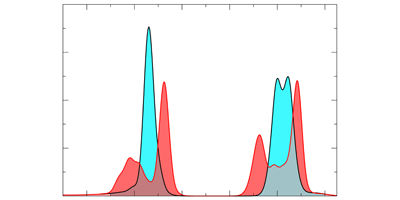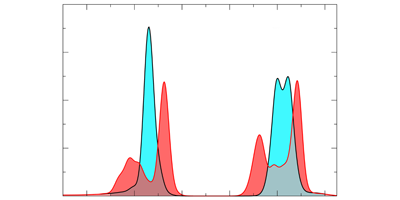Zeeman Effect Induced by Light Waves
The magnetic field of a light wave has a much weaker effect on matter than its electric field, so theorists rarely worry about magnetic effects of light on atoms. But a team writing in Physical Review Letters predicts that hitting a wide range of single-electron ions with high-intensity laser pulses should reveal magnetic effects in the spectra. The result, which could have been calculated decades ago, could lead to a new, more direct technique to measure the intensity of powerful research lasers.
Ordinarily, the Zeeman effect—the splitting of atomic energy levels in a magnetic field—is assumed to be unobservable as an effect of electromagnetic waves, but Evgeny Stambulchik and Yitzhak Maron of the Weizmann Institute in Israel now suggest otherwise. They performed a detailed analysis of a light wave interacting with an atom containing a single electron making transitions from an excited state to the ground state, using both analytical techniques and simulations. They found that in a hot krypton plasma, for example, there is a dramatic magnetic effect on the spectrum, especially with a light source with intensity of more than watts per square centimeter.
Such intensities are available at a growing number of facilities worldwide, and Stambulchik and Maron say that the long-ignored effect could in principle be used to spectroscopically measure the intensity of such lasers without disrupting ongoing experiments. (Currently these facilities must reconfigure for such tests and can’t do them at full power.) The authors also foresee implications for the interpretation of spectra emitted from laser-plasma interactions. – David Ehrenstein





